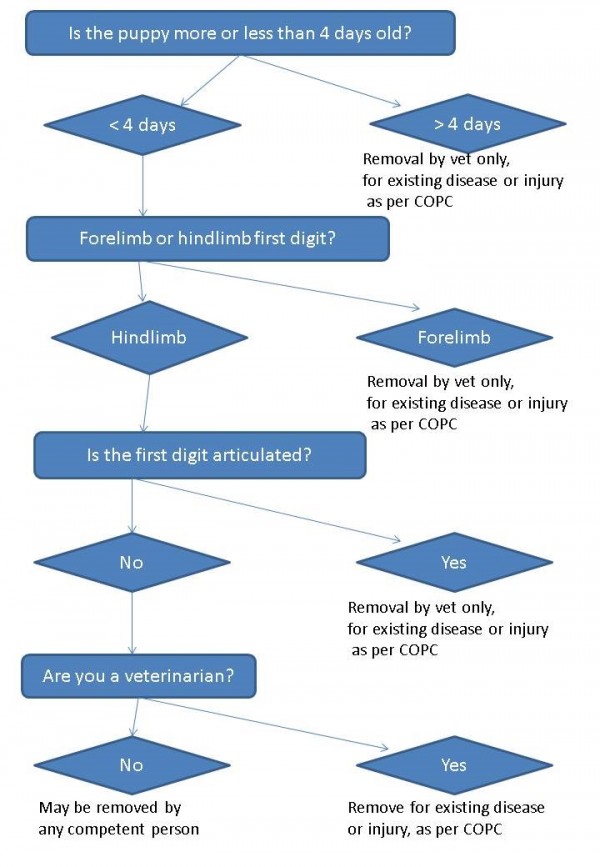Policy: First digit amputation in dogs
Policy type: Policy
Reference: 9d
Status: Current
Date ratified: November 2019
Policy
The NZVA is opposed to the prophylactic amputation of all first digits, whether articulated or non-articulated.
First digits should only be amputated in response to existing disease or injury (i.e. therapeutic reasons) by a veterinarian using appropriate analgesia. They should not be amputated solely for prophylactic, convenience or cosmetic reasons, nor to conform to a breed standard.
Explanation
Obligations under the VCNZ Code of Professional Conduct (CoPC) require that veterinarians do not perform surgery unless there is a net welfare benefit to the animal. This is to protect animals from being subject to unnecessary medical procedures (ie. purely cosmetic procedures).
The VCNZ and the NZVA both hold the position that prophylactic amputations of an articulated first digit and of non-articulated first digits (dew claws) do not provide a net welfare benefit to the dog (Veterinary Council of New Zealand, 2005).
Current New Zealand legislation allows for veterinarians to remove first digits and dewclaws for any reason, and for non-veterinarians to remove hind limb dewclaws if the dog is less than four days old (Animal Welfare (Care and Procedures) Regulations, 2018, s56).
While it is possible that the claw of any digit may become overgrown and catch, or become ingrown, it is more appropriate to manage this by clipping the claw from time to time rather than amputating a digit prophylactically.
Veterinarians should encourage owners to monitor all their dog’s digits to ensure that claws do not become overgrown.
Breed clubs are encouraged to alter breed standards that require the arbitrary removal of fore limb first digits and articulated hind limb first digits.
Decision-Making For First Digit Removal
The diagram below is a framework for veterinarians to determine if removal of first digits is appropriate.
Note: the ability for any competent person to remove non-articulated hind limb first digits in puppies less than four days old is reflective only of current legislation, and should not be interpreted as NZVA endorsement of the procedure in these circumstances.

Obligation to Report
The NZVA reminds its members that if they are presented with a dog that has had first digits removed, and there is reason to believe that the criteria outlined above were not met, they are obliged under the Animal Welfare Act (1999) to make a report to an Animal Welfare Inspector.
Definitions
Although both fore limb and hind limb first digits are commonly referred to as “dew claws”, only the vestigial digits inside the hind limbs are dew claws proper (Evans & de Lahunta, 2016).
Articulated fore limb first digit
An articulated first digit of the fore limb consisting of a proximal phalanx (bone) and a distal phalanx (bone). The distal phalanx has a claw attached. The digit articulates with the first metacarpal bone via the metacarpophalangeal joint.
Articulated hind limb first digit
A fully developed digit consisting of a proximal phalanx (bone) and a distal phalanx (bone). The distal phalanx has a claw attached. The digit articulates with the first metatarsal bone via a metatarsophalangeal joint.
Non-articulated first digit (dew claw)
A vestigial structure composed of a terminal phalanx with a claw attached and connected to the limb only by skin tissue. It is variably present on the hind limb of dogs, and on occasion may also be seen on a fore limb.
References
- Animal Welfare (Care and Procedures) Regulations. (2018). Retrieved from: http://www.legislation.govt.nz/regulation/public/2018/0050/latest/whole.html#LMS22927
- Evans, H., & de Lahunta, A. (2016). Guide to the Dissection of the Dog. St Louis: Saunders Elsevier.
- Veterinary Council of New Zealand. (2005). Code of Professional Conduct. Retrieved from http://www.vetcouncil.org.nz/CPC/index.php
